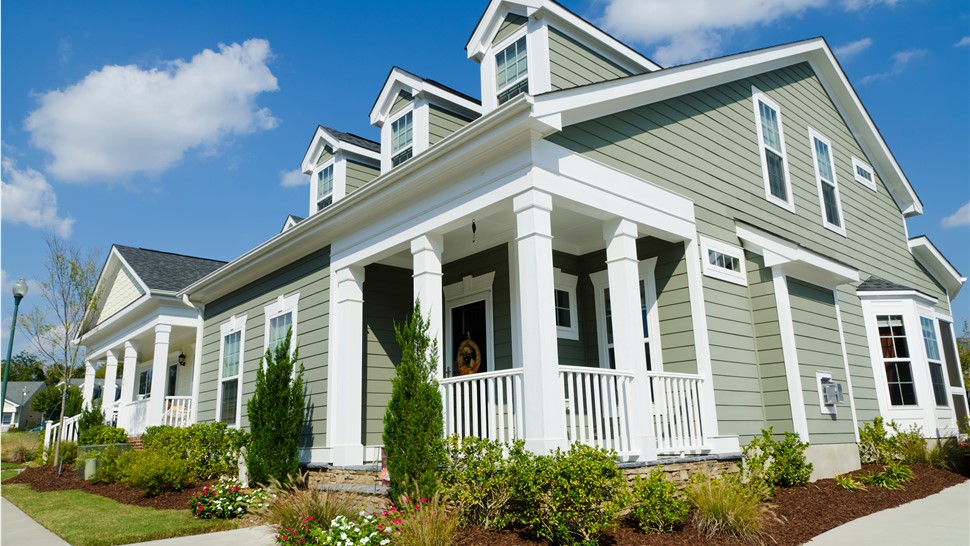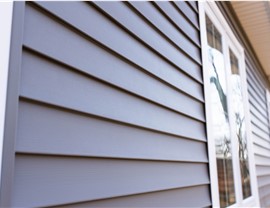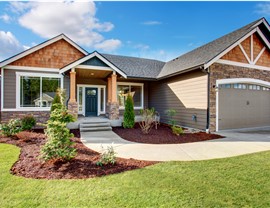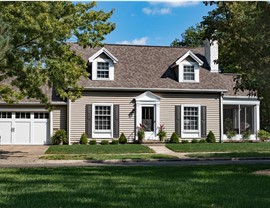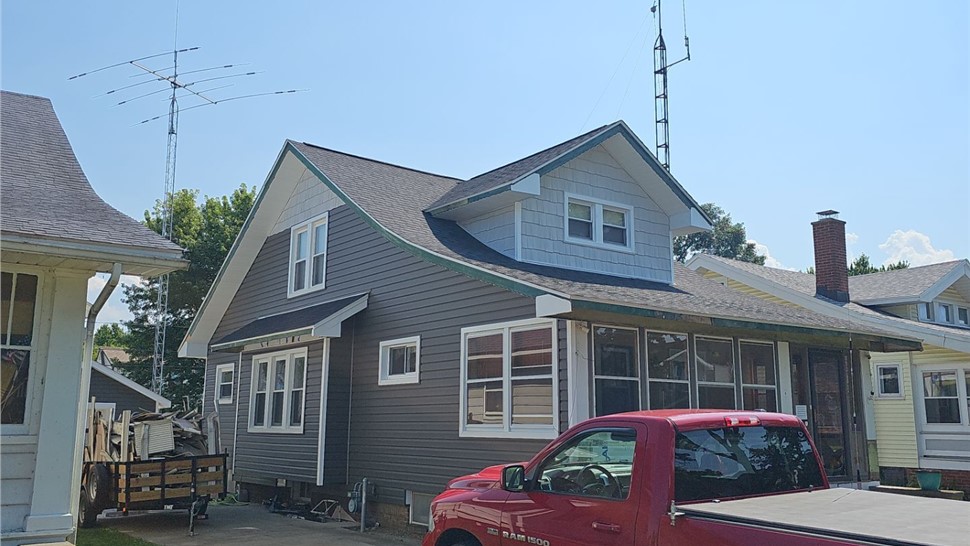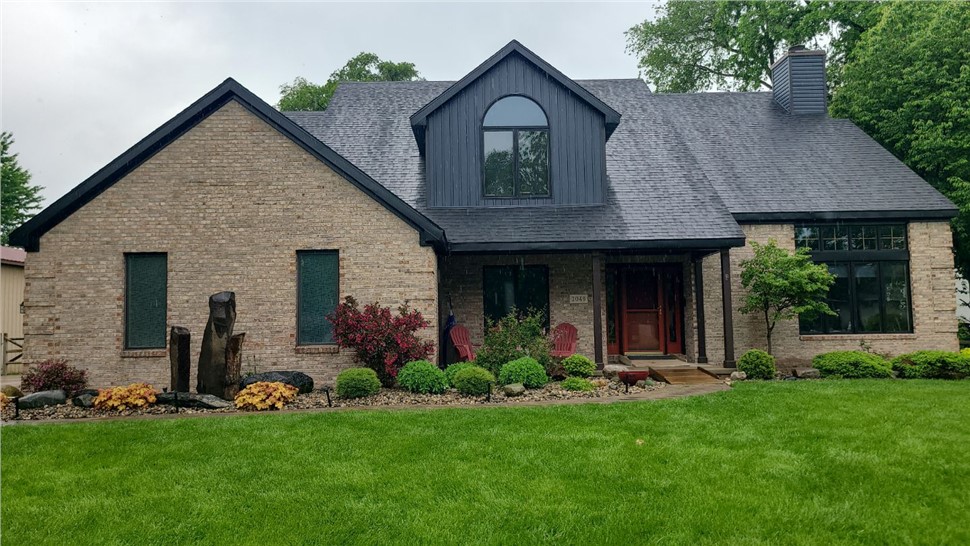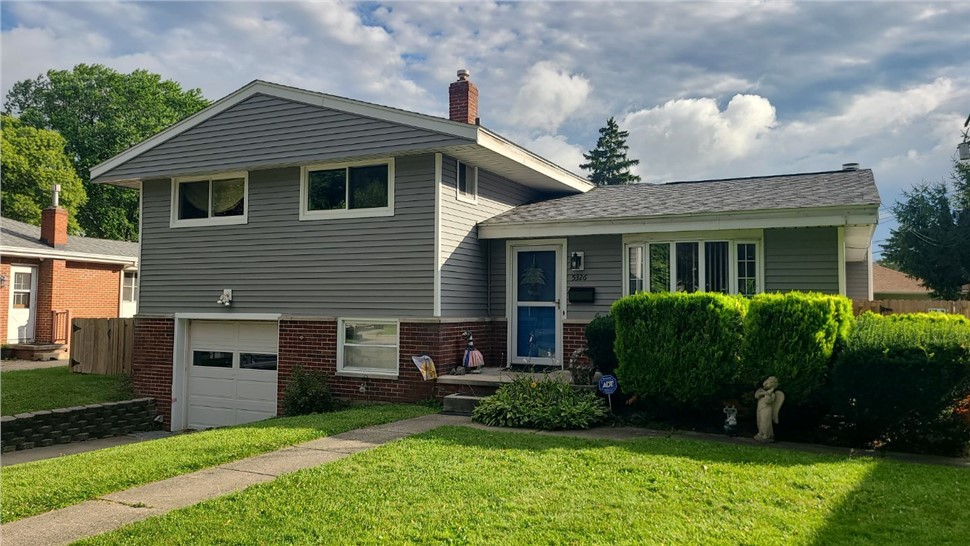Your home's exterior is the first impression visitors have of your property, and selecting the right siding plays a crucial role in both aesthetic appeal and structural protection. With numerous siding choices available today, homeowners can find options that perfectly balance appearance, durability, and budget considerations. This comprehensive guide explores the various siding materials, styles, and features to help you make an informed decision for your home exterior renovation project.
Siding Materials Comparison: Understanding Your Options
| Material | Lifespan | Maintenance | Cost Range | Style Variety |
|---|---|---|---|---|
| Vinyl Siding | 30-50+ years | Minimal | $3-12 per sq ft | Excellent |
| Fiber Cement | 30-50 years | Moderate | $5-15 per sq ft | Good |
| Wood Siding | 20-40 years | High | $6-25 per sq ft | Good |
| Metal Siding | 40+ years | Low to Moderate | $4-20 per sq ft | Limited |
| Engineered Wood | 20-30 years | Moderate | $4-16 per sq ft | Good |
| Vinyl Stone Veneer | 25-40 years | Minimal | $7-25 per sq ft | Accent Only |
Vinyl Siding
Popularity Rating: ★★★★★
Vinyl siding has become America's most popular exterior cladding option, and for good reason. This versatile material offers an impressive combination of benefits:
- Affordability: Typically costs 30-40% less than other premium materials
- Durability: Can last 30+ years with minimal maintenance
- Versatility: Available in countless colors, textures, and profiles
- Low Maintenance: Requires only occasional cleaning with soap and water
- Energy Efficiency: Insulated vinyl siding can improve your home's thermal performance
- Warranty Protection: Often comes with lengthy manufacturer warranties (up to lifetime)
Modern vinyl siding has evolved far beyond its early iterations, now featuring improved impact resistance, fade resistance, and realistic wood-grain textures that can beautifully mimic more expensive materials.
Fiber Cement Siding
Popularity Rating: ★★★★☆
Fiber cement offers impressive durability but comes with higher installation costs:
- Composition: Made from cement, sand, and cellulose fibers
- Appearance: Can resemble wood, stucco, or masonry
- Durability: Resistant to fire, insects, and rot
- Maintenance: Requires repainting every 7-15 years
- Cost: Moderately expensive (50-100% more than vinyl)
- Weight: Heavier than vinyl, requiring specialized installation
- Warranty: Typically 30-50 years
Wood Siding
Popularity Rating: ★★★☆☆
Traditional wood siding offers natural beauty but demands significant maintenance:
- Aesthetic Appeal: Provides classic, natural beauty
- Varieties: Cedar, pine, spruce, redwood, etc.
- Customization: Can be painted or stained any color
- Maintenance: Requires regular painting/staining (every 3-7 years)
- Durability Concerns: Susceptible to rot, insects, and fire
- Cost: High initial cost plus ongoing maintenance expenses
- Environmental Impact: Renewability depends on harvesting practices
Metal Siding
Popularity Rating: ★★★☆☆
Metal siding options include:
- Steel: Extremely durable but can rust if coating is damaged
- Maintenance: Low maintenance but can dent
- Cost: Moderate to high initial investment
- Longevity: Can last 40+ years
- Energy Efficiency: Reflects solar radiation but conducts heat
Engineered Wood Siding
Popularity Rating: ★★★☆☆
Combines wood fibers with resins for improved performance:
- Composition: Wood fibers bonded with resins
- Appearance: Wood-like aesthetic with more consistency
- Maintenance: Less than solid wood, more than vinyl
- Cost: Moderate price point
- Durability: Better moisture resistance than solid wood
Vinyl Stone Veneer Accents
Popularity Rating: ★★★☆☆
Decorative accents that add character to specific areas of the home, never used as whole-house siding:
- Accent Application Only: Specifically designed for decorative accents on 5-20% of exterior surfaces, not for full home coverage
- Common Placement: Perfect for entryways, columns, foundation facings, and gable accents
- Appearance: Realistic stone texture and coloration that complements primary vinyl siding
- Weight: Lightweight alternative that doesn't require structural reinforcement
- Installation: Easily integrated with primary vinyl siding as a design enhancement
- Maintenance: Same easy care as standard vinyl siding
- Cost-Effective Upgrade: Adds premium stone appearance to select areas without full stone pricing
Siding Styles and Profiles: Finding Your Aesthetic
| Siding Style | Best For | Visual Appeal | Vinyl Availability |
|---|---|---|---|
| Horizontal Lap | Traditional & Contemporary | Timeless, Classic | Excellent |
| Vertical Siding | Farmhouse, Contemporary | Distinctive, Eye-catching | Very Good |
| Shake & Shingle | Craftsman, Victorian, Coastal | Textured, Rustic | Excellent |
| Decorative Profiles | Victorian, Unique Homes | Ornate, Distinctive | Good |
Horizontal Lap Siding
The most common and versatile profile, featuring overlapping horizontal panels:
- Traditional Lap: Classic overlapping boards
- Dutch Lap: Features a distinctive notch or curve
- Beaded Seam: Includes a rounded bead at the bottom edge
- Smooth Finish: Contemporary, clean appearance
- Textured Finish: Mimics wood grain for traditional homes
Available in vinyl, fiber cement, wood, and engineered wood options, horizontal siding complements virtually any architectural style.
Vertical Siding Options
Creates a distinctive visual impact:
- Board and Batten: Wide boards with narrow battens covering seams
- Channel Siding: Creates shadow lines between panels
- Sheet Siding: Provides a seamless appearance
Vertical siding can be efficiently installed in vinyl formats, creating architectural interest with minimal maintenance concerns.
Shake and Shingle Styles
Perfect for adding character to gables, dormers, or accent walls:
- Traditional Shake: Captures the rustic appeal of hand-split cedar
- Half-Round Shingles: Semi-circular pattern for Victorian homes
- Staggered Edge: Creates dynamic, varied appearance
- Straight Edge: More uniform, clean appearance
Modern vinyl shake and shingle options offer the classic look of cedar without the maintenance headaches.
Decorative and Specialty Profiles
Enhance architectural details:
- Scalloped/Fish Scale: Ideal for Victorian or seaside homes
- Diamond Patterns: Distinctive geometric design
- Mixed Materials: Combining different siding styles for visual interest
These specialty profiles are available in various materials, with vinyl options providing the most cost-effective path to distinctive character.
Color and Texture Options: Expressing Your Style
Color Selection
Today's siding choices span an impressive spectrum:
- Traditional Colors: Classic whites, grays, beiges, and blues
- Bold Statement Colors: Deep reds, forest greens, navy blues
- Contemporary Palettes: Charcoals, slate grays, and muted earth tones
- Custom Color Options: Available across materials (with vinyl offering hundreds of pre-finished options)
Modern vinyl manufacturing techniques have produced fade-resistant formulations that maintain color integrity for decades.
Texture Options
Surface textures dramatically impact appearance:
- Smooth Finish: Clean, contemporary look
- Wood Grain: Replicates natural wood texture
- Hand-Split: Rustic, deeply textured appearance
- Brushed: Subtle texture for traditional homes
- Weathered: Pre-weathered appearance for instant character
Today's vinyl texturing technologies create remarkably realistic wood appearances without wood's maintenance requirements.
Multi-Tone and Variegated Finishes
For enhanced realism and depth:
- Variegated Patterns: Subtle color variations within panels
- Shadow Lines: Manufacturing techniques that create dimensional appearance
- Multi-Tone Options: Blend of related colors for natural appearance
Durability and Maintenance: Practical Considerations
Climate Adaptability
Different siding materials perform differently across climates:
- Hot, Sunny Regions: Consider fade resistance and heat reflection
- Cold, Snowy Areas: Impact resistance and thermal efficiency matter
- Coastal Environments: Salt spray resistance is crucial
- High Humidity Regions: Moisture and mold resistance essential
Vinyl siding performs exceptionally well across diverse climate conditions, with specialized formulations for extreme environments.
Maintenance Requirements
| Siding Material | Cleaning | Repainting/Refinishing | Repairs | Overall Maintenance |
|---|---|---|---|---|
| Vinyl | Simple washing with garden hose (1-2x yearly) | Never required | Rare and simple | Minimal |
| Fiber Cement | Regular cleaning | Every 7-15 years | Moderate difficulty | Moderate |
| Wood | Regular cleaning | Every 3-7 years | Common and complex | High |
| Engineered Wood | Regular cleaning | Every 5-10 years | Moderate | Moderate |
| Metal | Regular cleaning | Rarely needed | Dent repair possible | Low to Moderate |
Long-Term Performance Factors
Consider these durability aspects:
- UV Resistance: Prevents fading and degradation
- Impact Resistance: Withstands hail, debris, and daily wear
- Moisture Management: Prevents water infiltration
- Pest Resistance: Deters insects and wildlife damage
- Freeze/Thaw Cycles: Maintains integrity through temperature fluctuations
Premium vinyl siding options excel in these categories, offering peace of mind and reduced lifetime ownership costs.
Installation Considerations: Setting Up for Success
Professional vs. DIY Installation
Installation approach affects outcomes:
- Vinyl Siding: Most DIY-friendly option, though professional installation ensures optimal performance
- Fiber Cement: Requires specialized tools and expertise
- Wood: Benefits from experienced carpenters
- Engineered Wood: Moderate installation complexity
- Metal: Requires specialized knowledge
Proper Installation Elements
Quality installation requires attention to:
- House Wrap: Moisture barrier protection
- Insulation Options: Opportunity for energy efficiency improvement
- Proper Fastening: Material-specific attachment methods
- Expansion Allowances: Accommodating natural material movement
- Trim Details: Finishing touches that protect and beautify edges
- Flashing: Critical water diversion elements
Professional siding contractors understand the nuances of each material, with vinyl installation offering the best combination of speed, cost-effectiveness, and long-term performance.
Cost Analysis: Budgeting for Your Project
Material Costs Per Square Foot
| Siding Material | Low Range | Mid Range | Premium Range |
|---|---|---|---|
| Vinyl | $3-5 | $5-8 | $8-12 |
| Fiber Cement | $5-9 | $9-12 | $12-15 |
| Wood | $6-10 | $10-15 | $15-25 |
| Engineered Wood | $4-8 | $8-12 | $12-16 |
| Metal | $4-8 | $8-12 | $12-20 |
| Vinyl Stone Veneer | $7-10 | $10-15 | $15-25 |
Total Project Cost Factors
Beyond materials, consider:
- Installation Labor: Varies by material complexity
- Removal of Existing Siding: If applicable
- Structural Repairs: Often discovered during replacement
- Trim and Accessories: Finishing details
- Insulation Upgrades: Energy efficiency improvements
- Waste Disposal: Removal of old materials
- Permits and Inspections: Regulatory requirements
Return on Investment
Different materials offer varying ROI:
- Vinyl Siding: 70-80% ROI with minimal lifetime costs
- Fiber Cement: 70-75% ROI with moderate lifetime costs
- Wood: 60-70% ROI with high lifetime costs
- Engineered Wood: 65-75% ROI with moderate lifetime costs
When considering lifetime value (initial cost plus maintenance), vinyl consistently offers the strongest financial performance.
Environmental Impact: Sustainable Choices
Material Lifecycle Assessment
Environmental considerations include:
- Manufacturing Process: Energy and resource intensity
- Expected Lifespan: Longer-lasting materials reduce replacement waste
- Recyclability: End-of-life options
- Maintenance Requirements: Products requiring fewer chemicals and resources
- Insulation Value: Energy efficiency during use
Sustainability Credentials
Look for these environmental certifications:
- LEED Credits: Points toward green building certification
- ENERGY STAR: Energy efficiency recognition
- Cradle to Cradle: Holistic sustainability assessment
- EPDs (Environmental Product Declarations): Transparent impact reporting
Many vinyl siding manufacturers have made significant sustainability advances, with modern vinyl having a smaller carbon footprint than alternatives requiring frequent replacement or maintenance.
FAQs: Common Questions About Siding Choices
| Question | Answer |
|---|---|
| What siding material lasts the longest? | While stone and brick can last a century or more, their high cost puts them out of reach for many homeowners. Among mainstream options, premium vinyl siding offers the best combination of longevity (50+ years) and value, particularly when considering total lifecycle costs including maintenance. |
| Which siding is best for extreme weather? | Different materials excel in different conditions. However, vinyl siding engineered for your climate zone offers excellent all-around performance, with special formulations available for high wind zones, extreme temperature fluctuations, and high-UV environments. |
| Can I install new siding over existing materials? | In many cases, yes. Vinyl siding can often be installed over existing materials (after proper inspection and preparation), saving removal costs and reducing landfill waste. |
| How much can I save on energy bills with insulated siding? | Insulated vinyl siding can improve wall R-values by R-2 to R-5, potentially reducing energy costs by 5-20% depending on your home's construction and climate. |
| What's the most low-maintenance siding option? | Vinyl siding requires the least maintenance of all major siding materials, needing only occasional cleaning with soap and water to maintain its appearance for decades. |
| Can I paint my siding if I want to change colors later? | While all siding materials can technically be painted, vinyl siding comes in such a wide variety of factory-finished colors that painting is rarely necessary – saving significant costs over the life of your home. |
Get Expert Advice for Your Siding Project
Choosing the right siding involves balancing aesthetics, performance, and budget. At Integrity Home Exteriors, our siding specialists can help you navigate these choices with personalized recommendations tailored to your home's architecture, your design preferences, and your practical requirements.
Our professional installation teams are certified experts in various siding materials, with particular specialization in premium vinyl siding options that deliver exceptional beauty and performance.
Contact us today for a free consultation and discover how the right siding choice can transform your home's appearance, improve its efficiency, and protect your investment for decades to come.
